We spent the last three days in La Zona Cafetera, or Colombia’s coffee country. Situated in the mountains between Bogotá and Medellin, it’s the perfect climate for growing coffee plants—and, perhaps ironically, the perfect climate for slowing down, albeit with an espresso in hand.
The least relaxing part of coffee country was the arrival, though it still wasn’t that bad. We took an 8-hour, overnight bus from Bogotá to Manizales, one of the major towns in coffee country. We got in at 6 am and, bleary-eyed, wandered around the bus station. We shared a cup of “cafe tinto”, and it didn’t taste very good—a surprise, I thought, given our location.
From the bus station, we took a large van to the drop-off point for our guesthouse (Hacienda Venecia, located several miles from Manizales and only accessible by a gravelly, steep road). The van was packed with happy, talkative locals, and I think Vikram and I were the only non-Colombians. The partition between us and the driver was covered in large images of Jesus and the Virgin Mary.
The bus dropped us off at Las Palmas, a small and wall-less restaurant perched over a valley filled with coffee plants. They didn’t have a menu, but the lady there asked if we wanted breakfast and served us a generous portion of scrambled eggs with queso fresco.
By 10 am we were picked up by the Hacienda Venecia staff, and the relaxation could officially commence.
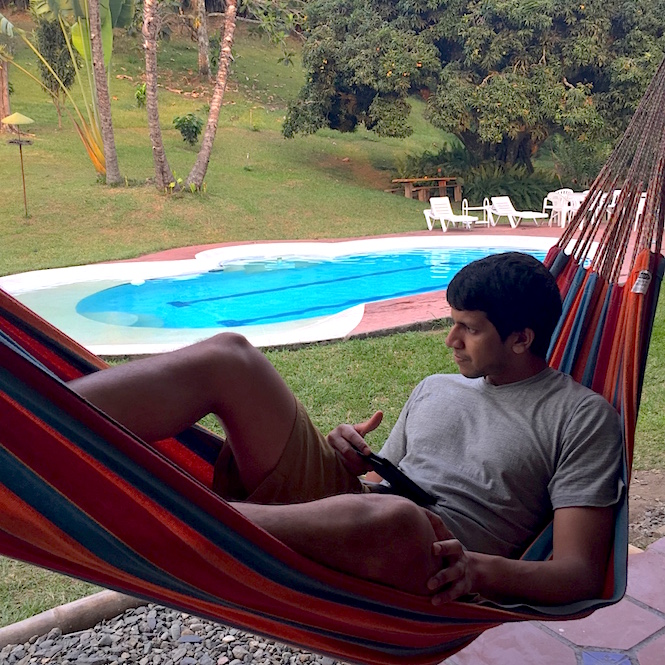 Hacienda Venecia is a large, working coffee farm that also includes a guesthouse and provides plantation tours for tourists. Besides the tour and a few self-guided hikes around the farm, there’s not much to do here but relax, read, and take a dip in the pool.
Hacienda Venecia is a large, working coffee farm that also includes a guesthouse and provides plantation tours for tourists. Besides the tour and a few self-guided hikes around the farm, there’s not much to do here but relax, read, and take a dip in the pool.
And with this type of long-term travel, it’s such a luxury to have the time to just stay here for three nights and relax. Typically when I’ve travelled before, the desire to see more often comes at the expense of slowing down. And usually that’s fine—on a week-long vacation, I’d rather see more unique sites and attractions than lay by the pool all day—but on this trip, we have the flexibility and opportunity to do both types of traveling.
(Relatedly, most of the other travelers we’ve met so far our Europeans, and overwhelmingly Dutch—and all of them are working professionals on multi-week vacations, mostly around 4 weeks. This is practically unheard of in the U.S.!)
On our first full day here, we took the guided tour of the plantation. A few highlights:
- Allegedly, coffee was discovered by an Ethiopian farmer who noticed that his goats went crazy after eating a new type of fruit. He tried it himself, felt crazy and sleepless, and decided it would be good to share with the rest of the world.
- There are two main types of coffee beans—arabica and robusto. Robusto beans have more caffeine which makes it more resistant to disease and therefore easier to grow, but also results in a more bitter taste. It’s pretty much only used for instant coffee or blends. Arabica beans have less caffeine so they taste better but then require more maintenance to grow.
- On this farm, all of the coffee beans are hand-picked to ensure best ripeness and high quality. Our tour guide made the point that farms in Brazil use a machine to shake down the trees so that all the beans fall at once, even if they’re not all ripe, because they care more about quantity than quality. (Unsurprisingly then, Brazil is the number 1 producer of coffee beans in the world; Colombia comes in third, after Vietnam.)
- Coffee, depending on the type of bean and how you roast them, has different aromas—from expected scents like vanilla and caramel to more unique flavors like basmati rice and garden peas. (Who knew??)
In the evening, I relaxed in a hammock and took in everything around me: the sun setting behind the mountains that cast a rosy orange glow between the wispy cloud, the frogs croaking and splashing in and out of the pool, the smell of cigarette smoke as the many Dutch travelers conversed in their own language, and the rough feel of new blisters on my toes.
I’m sure this will all be off-set by more hectic times on our trip, but for now I’ll relish this opportunity to slow down and relax.
Travel Notes:
- The overnight bus was chilly—bring a jacket (or a blanket, like the locals did)! We had also been warned that Colombian buses play loud movies, which was the case for the first two hours of our ride, but it luckily ceased by midnight.
- In coffee country, at least at this time of year, the weather fluctuated from cool, breezy mornings and evenings to sweltering hot days. We didn’t get any rain, but the staff said that it’s not uncommon for rainstorms to descend unexpectedly (and leave just as quickly).

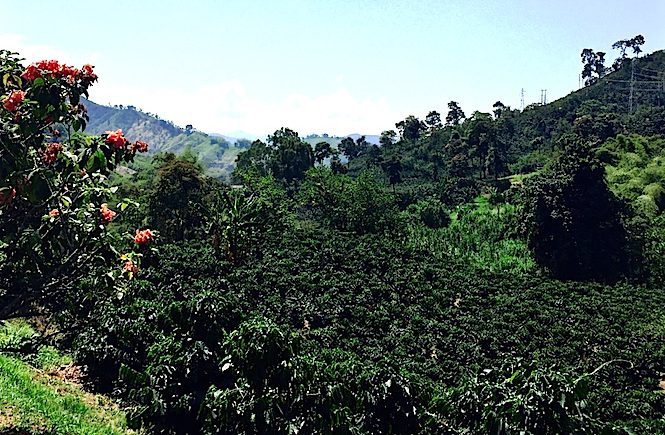
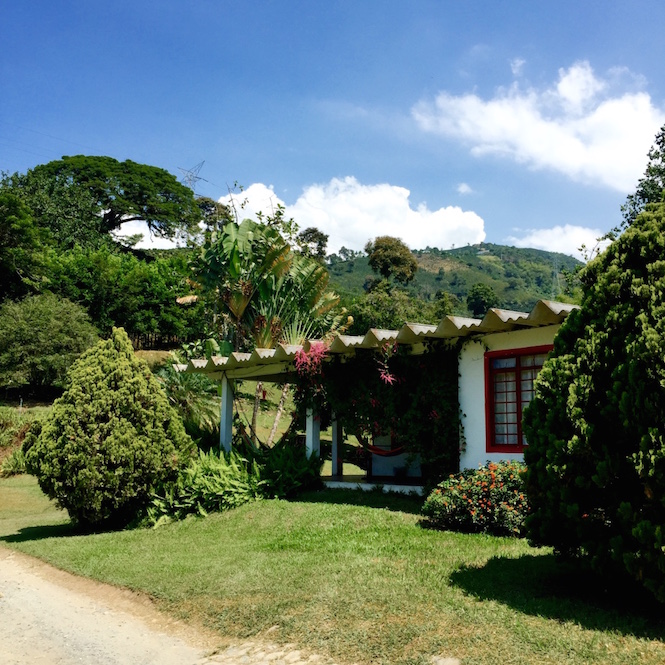
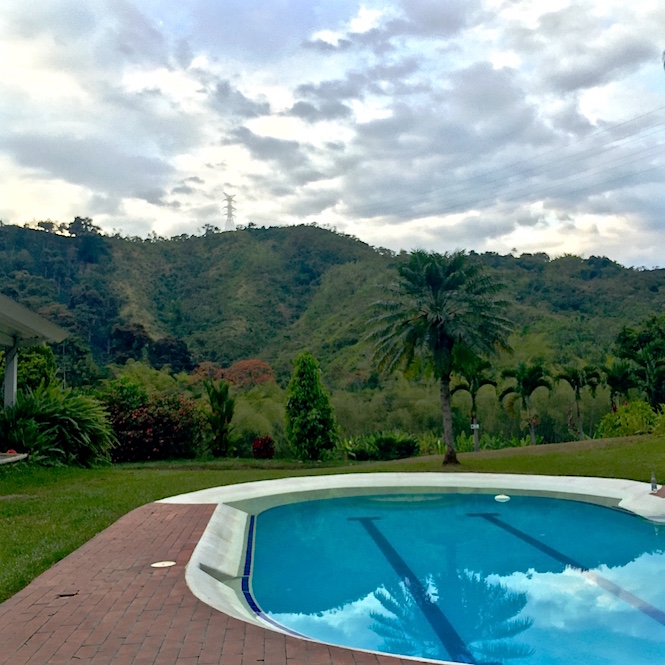
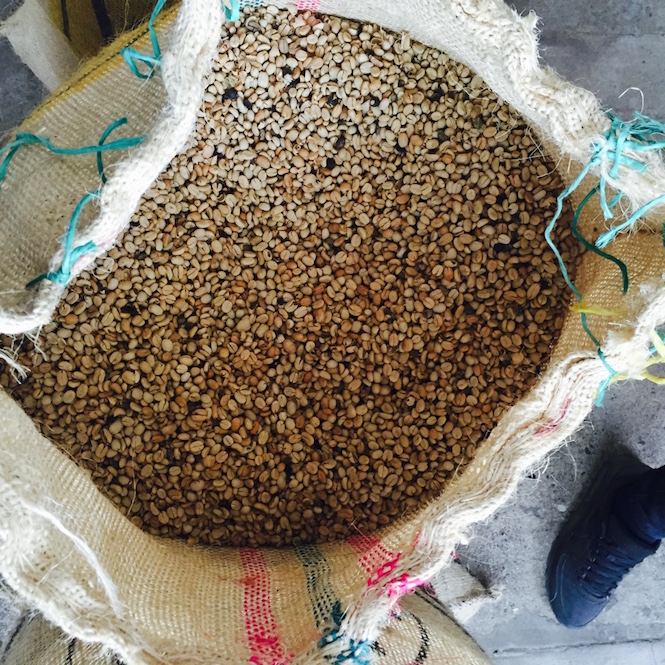
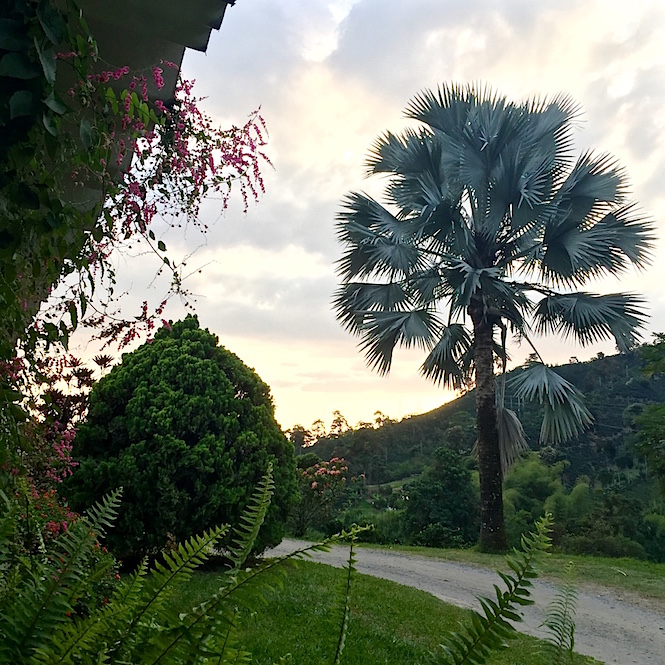
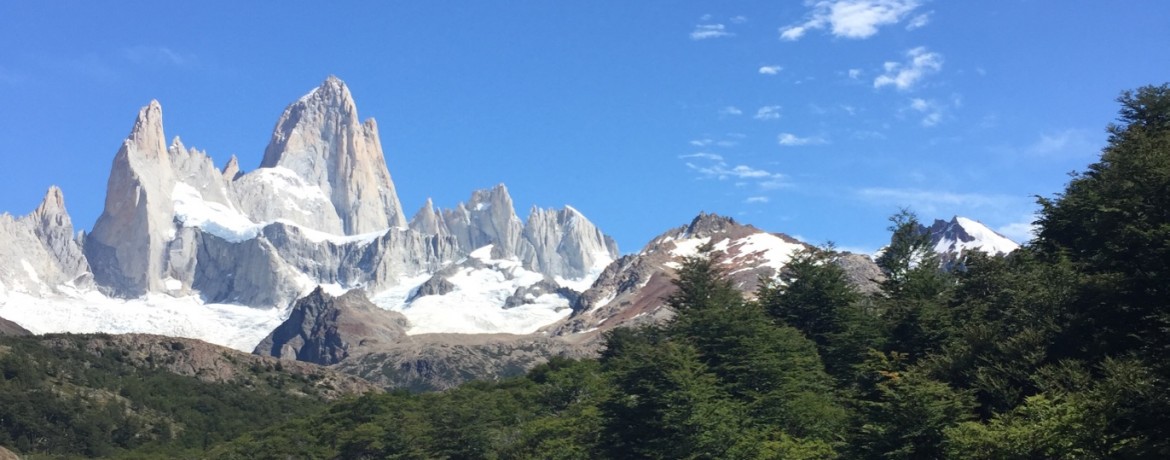
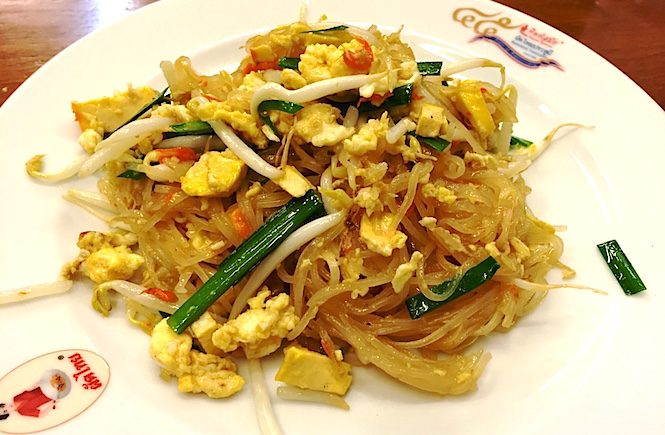
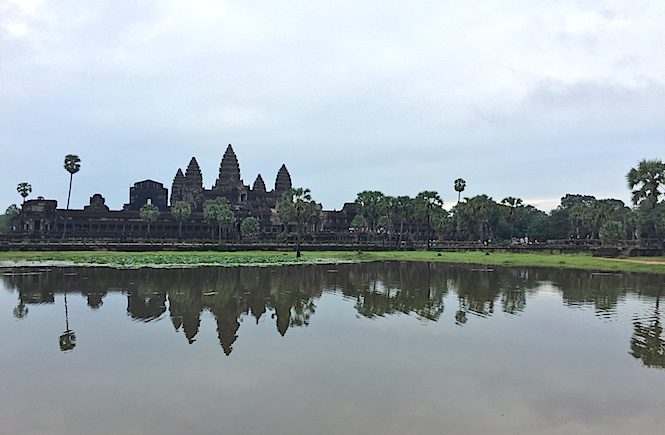
5 Comments
I’m enjoying the arm-chair travel! Your vivid descriptions bring the sights alive. xox
Send more pictures please!
More pictures now in the “this week” section! xoxo
Dang… Vikram’s pythons in that hammock look great 🙂 Glad ou guys are having fun! More scenery pictures 🙂
Thanks, Sam(wise)!